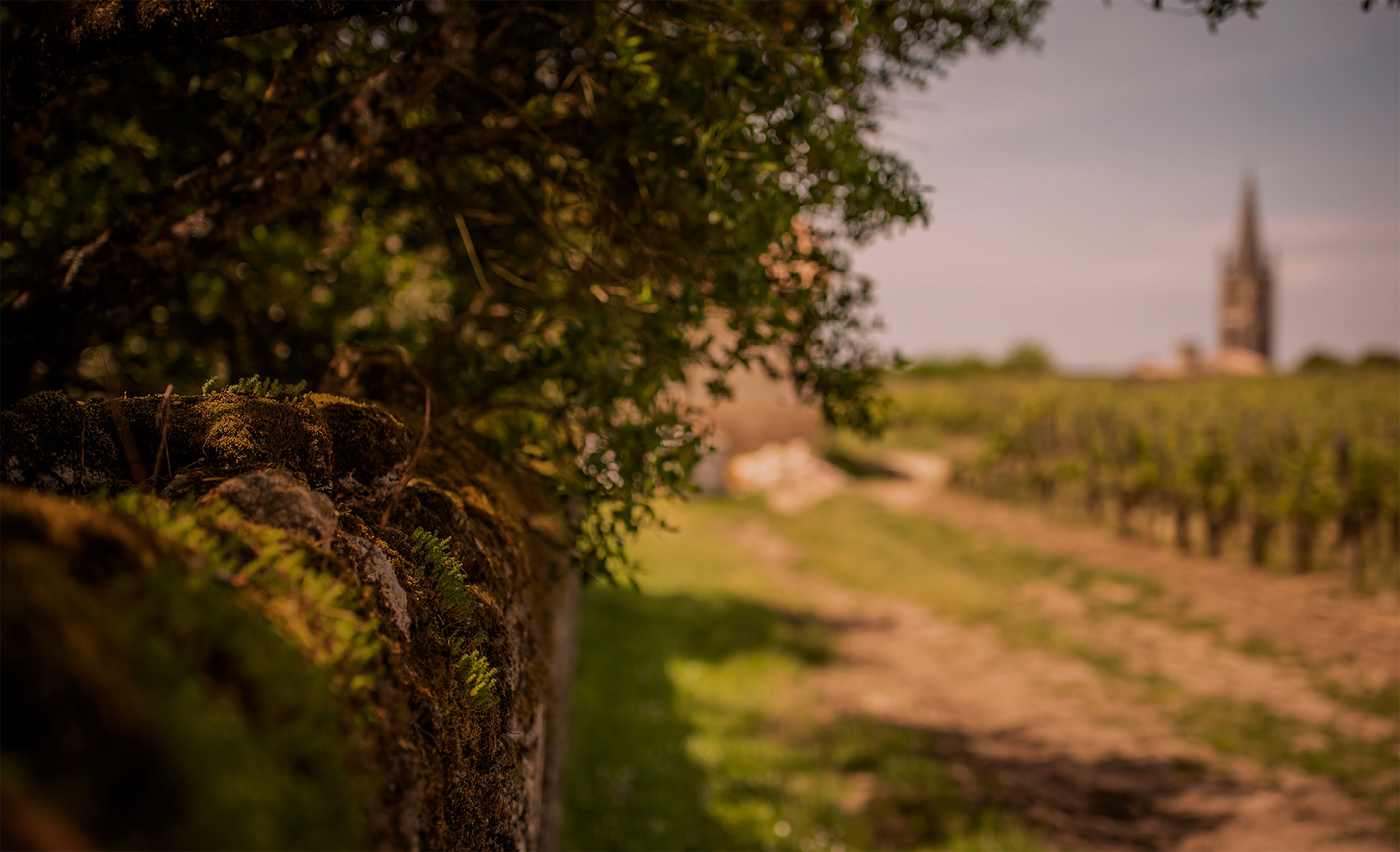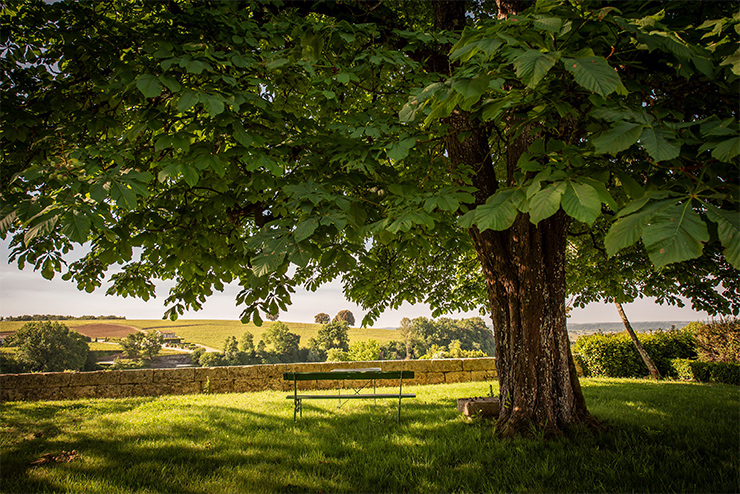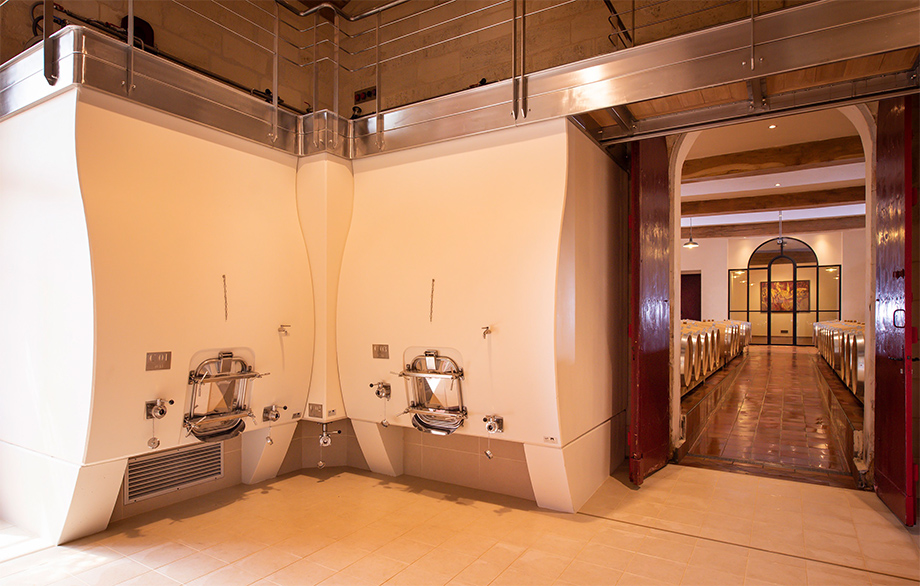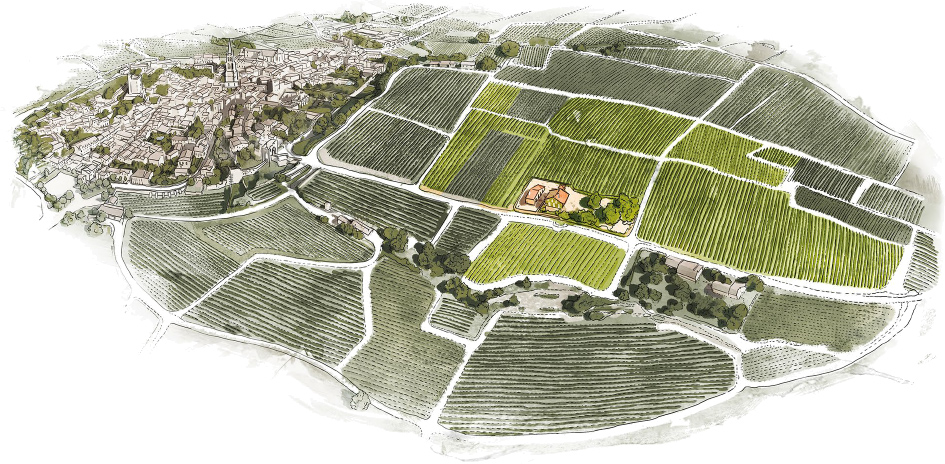


To understand La Serre, you need to discover its stone quarries and its privileged location at the top of the Saint-Émilion limestone plateau. The vines are constantly ventilated by the air, and are south-facing.

La Serre occupies a prime location in the vast Saint-Emilion area: the 7 hectares of vines stretch to the top of the plateau, two hundred metres from the ramparts of the medieval town. Beneath a thin layer of clay, varying in thickness from 30 centimetres to one metre, lies the famous asteriated limestone rock. Underneath this, or rather within it, lies a network of underground galleries on several levels.
A visit to the quarries on the estate will give you a better understanding of what lies beneath the vines. The huge mass of rock captures some of the rainwater and releases it when the plant needs it most. This subtle, moderate and regular supply of water makes all the difference in dry years.
This is all behind the scenes. On the surface, we discover the other face of the vineyard. At an average altitude of 80 metres, with an expansive view, the vines benefit from constant aeration, which naturally prevents disease, especially mildew and powdery mildew. Around the château, the plots slope gently southwards, over the small valley of Fongaban. A few hundred metres further, another group of plots leads down the Francazat slope, still heading south. This 63-acre area boasts magnificent blue clays, our second mineral treasure.
Its sunny exposure may explain the name given to the property, “serre” meaning hothouse in French. Sun, aeration, coolness: the terroir of La Serre is the perfect example of balance. It explains everything, starting with the style of the wines, the opposite of heavy and dull.

From the small park beside the house, it's barely a minute’s walk to the cellars. The stone buildings were recently renovated by Jean-Pierre Errath, heritage architect, and Aurélien Métayer. The 19th-century roof structure has been preserved. It stands over the ageing cellar, the malolactic fermentation cellar and the vat room. Commissioned for the 2018 vintage, the vat room comprises seven concrete vats, each with a capacity of 50 to 80 hectolitres, and each dedicated to a specific plot of vines. A handsome oak and stainless-steel staircase leads up to the top of the vats, taking guests to the tasting room.


The geographical location, history and geology of La Serre make it a very special place within the Saint-Émilion Jurisdiction, which is listed by Unesco as a World Heritage Site. This means we have a duty to look after it. We are committed to the principles of agro-ecology: the management of the estate is considered in its entirety, taking into account the interaction with the local environment. This is about more than just our growing methods; it’s about safeguarding the ecosystem of La Serre. One example is the 400 metres of low walls around the plots, typical of Saint-Emilion, which provide shelter for wild flora and fauna.
